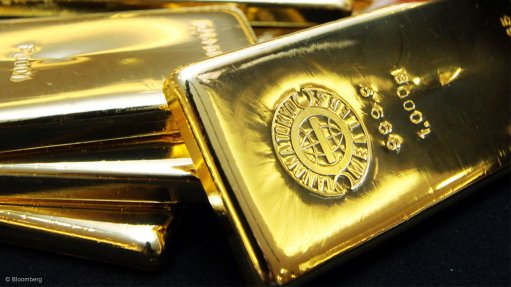
Photo by: Bloomberg
The World Gold Council (WGC) on Thursday said deceleration in economic growth globally will undoubtedly impact on consumer demand for gold and gold’s volatility may remain high.
However, high risk levels, coupled with widespread negative real rates and quantitative easing, will be supportive of gold investment demand as a save heaven.
The council explained that gold is being affected by the unprecedented economic and financial market conditions in play around the world as the spread of Covid-19 expands.
“We believe that recent volatility in the gold price has been driven by massive liquidations across all assets, and likely magnified by leveraged positions and rule-based trading.
“Gold has also likely been used to raise cash to cover losses in other asset classes, because it remains one of the best performing asset classes year-to-date, it is a high quality and highly liquid asset, trading more than $260-billion a day in March to date.”
The WGC added that, so far, selling appeared to be more concentrated on derivatives in exchanges and over-the- counter.
While gold-backed exchange-traded funds (ETFs) had experienced outflows in recent days, flows remained positive for the year.
The council reported that funds across the main regions of the world had seen $3.6-billion of net inflows in March, coming to a collective total of $11.5-billion in the year to date.
COMMON UNCERTAINTIES
The WGC in its latest market report discussed why the gold price had dropped alongside stocks, to which the most prominent answer was the massive liquidation that virtually all asset classes experienced in the past week, with gold being no exception.
Additionally, gold may have also been used to raise cash.
Given the volatility of gold now, the WGC said it nonetheless remained an effective portfolio hedge as a source of liquidity and collateral. Gold experienced pullbacks at the onset of the global financial crisis of 2008/9 too, but by the end of that year, gold was one of the few assets to post positive returns.
The council said that it was also important to note that while the gold price was usually quoted in dollars, its impact on portfolio performance was measured in the local currency of an investor.
To date, as stock indices around the world have fallen sharply, gold’s performance has been positive in various currencies, including the pound sterling, euro, and Indian rupee, and it has only been flat to slightly negative in renminbi, dollar and Japanese yen.
Investors seem to agree that, despite the price pullback and selling in most gold-backed ETFs listed in the US and Europe this week, global inflows remain positive.
NEXT UP
The WGC stated that gold’s performance was intertwined with its unique nature as a consumer good and investment asset, while being linked to key drivers – economic expansion, risk and uncertainty, opportunity cost and momentum.
So far this year, more than 30 central banks have cut rates and many have implemented additional quantitative easing measures.
Additionally, governments around the world are pledging trillions of dollars in support of their citizens and economies, but ballooning budget deficits, negative real rates and debasement of currencies will present structural challenges to asset managers, pension funds and personal savings.
The WGC warned that it may take a while for financial markets to stabilise. Amid high volatility, the gold price may experience additional swings, but the long-term implications of an environment combining high risk and lower opportunity cost should support gold investment demand.
“We also expect central banks to remain net gold buyers overall, albeit likely not at the same rate as in the past two years.
“On the other hand, consumer demand may soften significantly,” the council said, adding that early figures by the National Bureau of Statistics in China suggested a 40% contraction in purchases of gold, silver and gem jewellery during the first two months of the year.
Additionally, the new travel and movement restrictions being implemented across the world would undoubtedly affect other regions.
Historically, however, the WGC said, investment flows in periods of uncertainty tended to offset weakness in consumer markets.